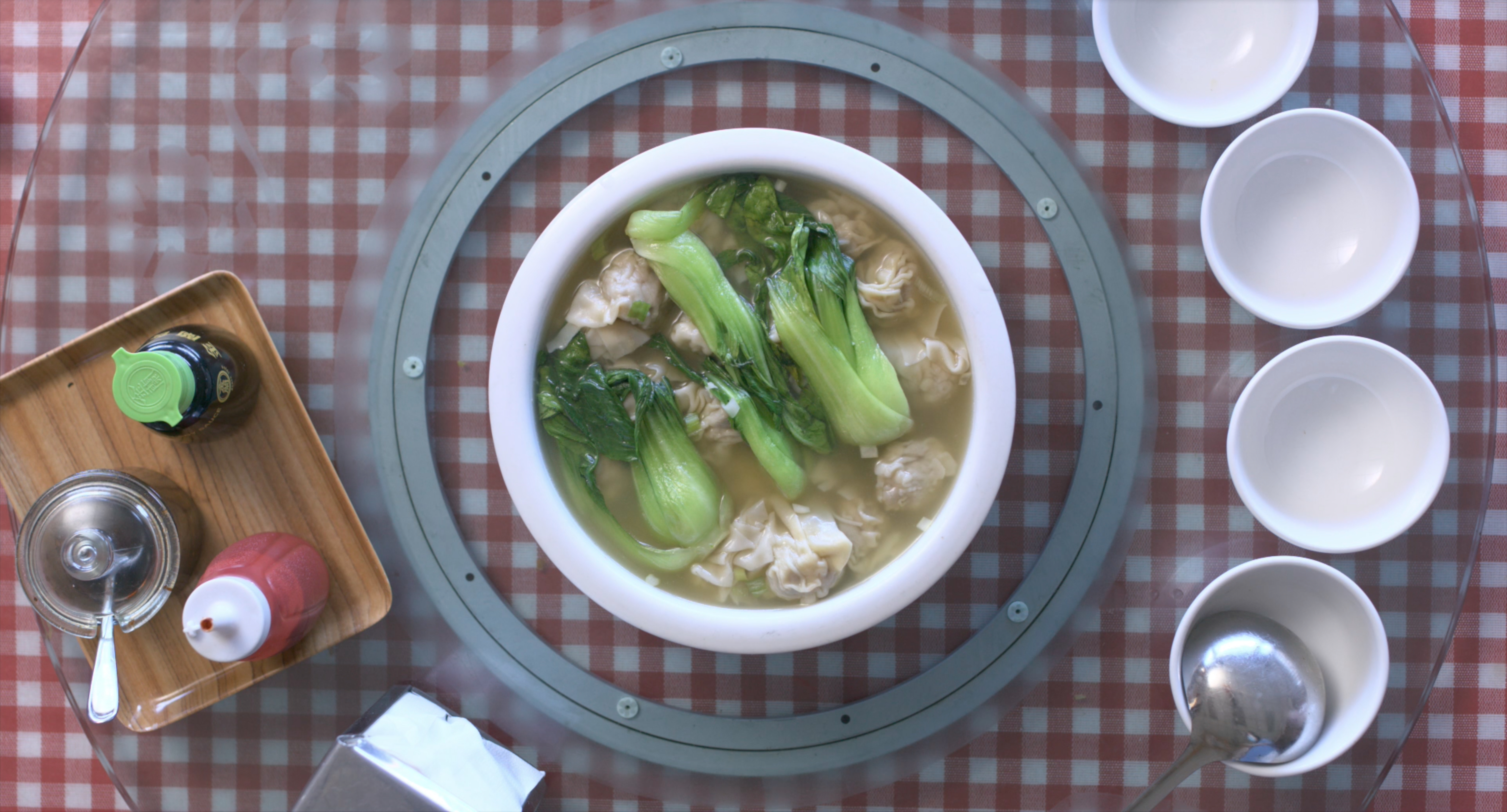Ho Tak Kee
何德記
Ho Tak Kee is an assembly of fragmented memories and imagined conversations of a local wonton house that was lost to fire one Christmas day. This work is presented as one part fairy tale, one part cooking show and one part Cantonese school.
The title is borrowed from the once-bustling neighbourhood staple, Ho Tak Kee Wonton House. Many elements of this project were inspired by conversations with the Ho Tak Kee family and the artists in the area who frequented this eatery. This settler story is emblematic of many newcomer/family-run eateries.
The Mount Pleasant Community Art Screen is located on the site of the former Ho Tak Kee Wonton House.
Artist Bio
Leung Yiksea 梁亦詩 (pronounced leurn-yick-see) is a Canadian media artist whose work is informed by the people and settlers of the Musqueam, Squamish and Tsleil-Waututh lands (where Vancouver is located). Her family’s ancestral villages are located in 番禺 (punyu) and 新會 (sunwui) of southern China. The focus of her work centres on place-based stories and identity. Before becoming a parent to two incredible kids, she collaborated on intergenerational, multilingual, site-specific projects in Chinatown and Strathcona neighbourhoods. She co-directed Cedar and Bamboo (with filmmaker Kamala Todd), which has been shown nationally, internationally, and most recently as part of VIVO Media Arts’ thirstDays series and the Art Gallery of Greater Victoria’s Imagining Fusang exhibition.
Producer Bio
Karin Lee 李嘉慈 is a Canadian media artist and filmmaker. Her critical voice and perspective touches on the past and the present, both local and international. An artist who constantly traverses new territory, Lee challenges film and media forms and addresses new audiences. Born and raised in Vancouver, BC, Karin’s films are influenced by her family who immigrated to Canada in the 1870’s, settling in Barkerville BC. Lee’s parents were activists who worked in the downtown eastside, with her father running a Chinese communist bookstore at 33 East Hastings from the mid-1960s to ’80s. Her interest in Chinese Canadian identity, feminism and social justice activism informs her narrative films, experimental video, documentaries and original TV series she has written, directed and produced since 1991.
[Image description: a family-sized bowl of wor wontons topped with vibrant green bok choy is centred on a glass lazy susan, on a red-and-white gingham tablecloth. To the left of the bowl is a tray of condiments: soy sauce, chili oil and an diner-style ketchup bottle. To the right are four empty rice bowls and a ladle.]
